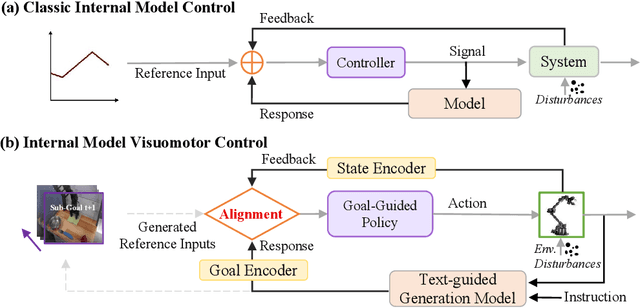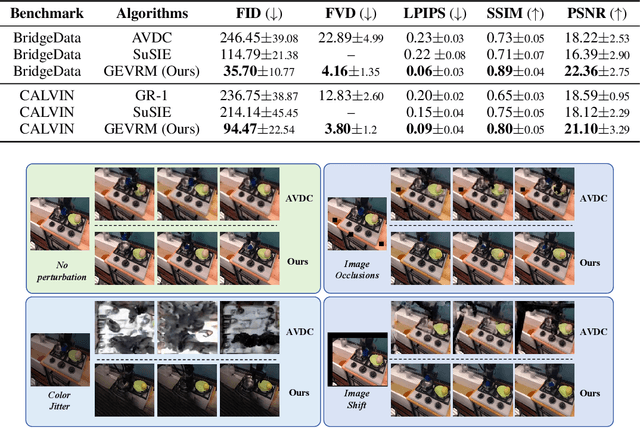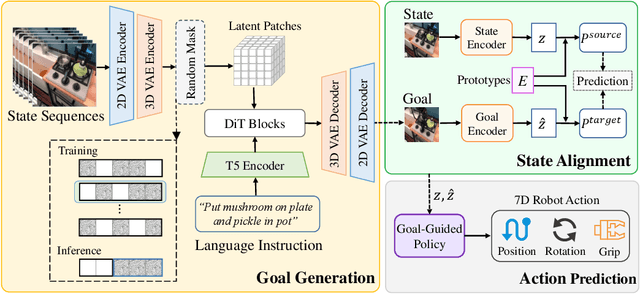GEVRM: Goal-Expressive Video Generation Model For Robust Visual Manipulation
Paper and Code
Feb 13, 2025



With the rapid development of embodied artificial intelligence, significant progress has been made in vision-language-action (VLA) models for general robot decision-making. However, the majority of existing VLAs fail to account for the inevitable external perturbations encountered during deployment. These perturbations introduce unforeseen state information to the VLA, resulting in inaccurate actions and consequently, a significant decline in generalization performance. The classic internal model control (IMC) principle demonstrates that a closed-loop system with an internal model that includes external input signals can accurately track the reference input and effectively offset the disturbance. We propose a novel closed-loop VLA method GEVRM that integrates the IMC principle to enhance the robustness of robot visual manipulation. The text-guided video generation model in GEVRM can generate highly expressive future visual planning goals. Simultaneously, we evaluate perturbations by simulating responses, which are called internal embeddings and optimized through prototype contrastive learning. This allows the model to implicitly infer and distinguish perturbations from the external environment. The proposed GEVRM achieves state-of-the-art performance on both standard and perturbed CALVIN benchmarks and shows significant improvements in realistic robot tasks.
 Add to Chrome
Add to Chrome Add to Firefox
Add to Firefox Add to Edge
Add to Edge